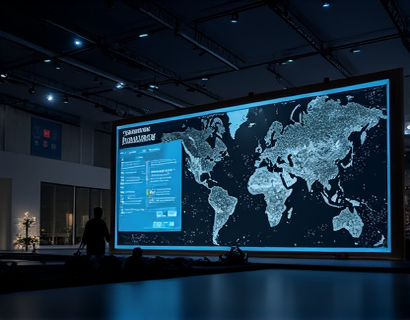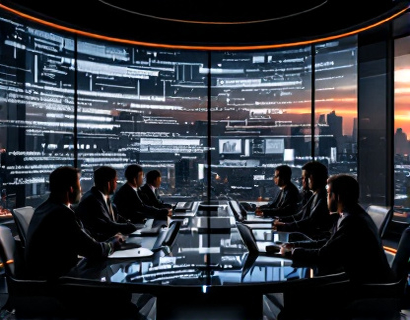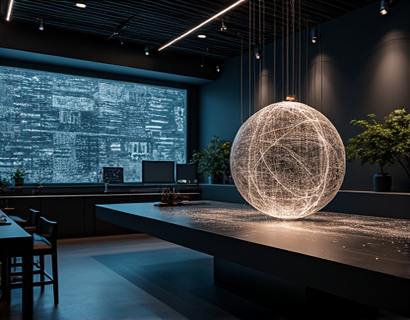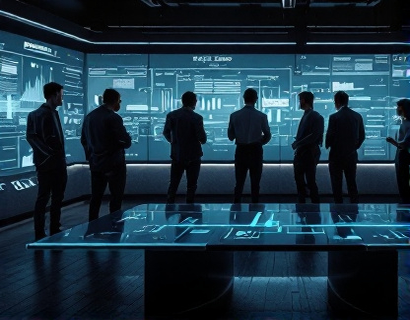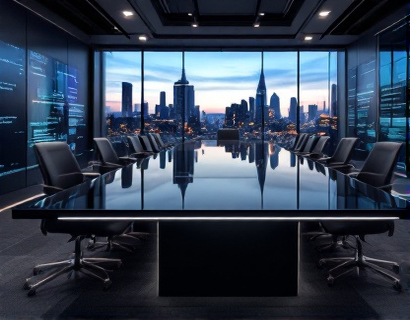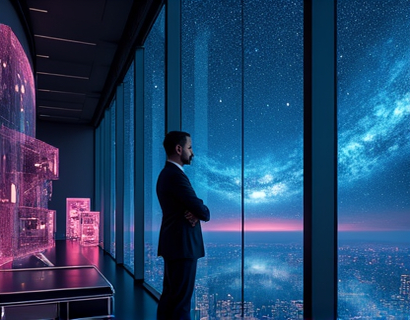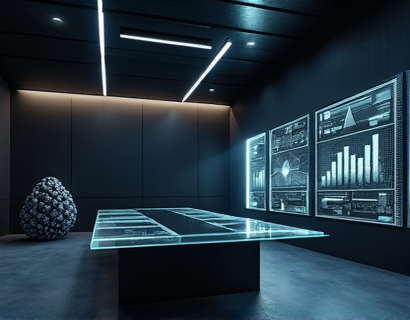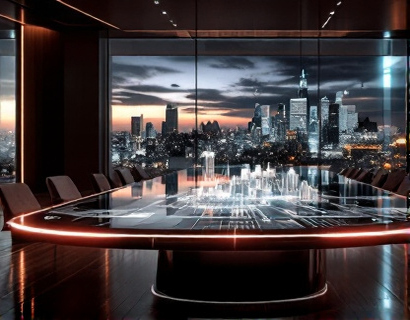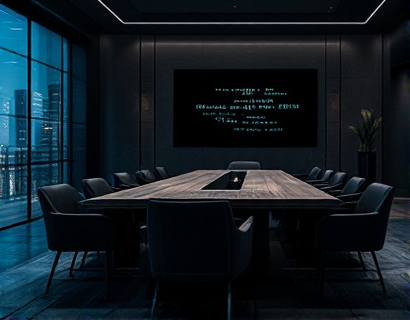Transforming Daily Life with Augmented Reality Shopping
In the rapidly evolving world of e-commerce, augmented reality (AR) has emerged as a transformative force, redefining how consumers interact with products and services. This technology, once confined to the realms of gaming and entertainment, is now revolutionizing the shopping experience, offering a blend of the physical and digital worlds. For tech-savvy consumers eager to enhance their lifestyle, AR shopping presents a unique opportunity to experience products in a more immersive and interactive manner. This article delves into the intricacies of augmented reality shopping, exploring its benefits, applications, and the future it holds for lifestyle enhancement.
Understanding Augmented Reality Shopping
Augmented reality shopping leverages AR technology to overlay digital information and virtual objects onto the real world, as seen through a device's camera. This seamless integration allows consumers to visualize products in their own environment before making a purchase. For instance, a customer can use an AR app to see how a piece of furniture would look in their living room, or how a new pair of glasses would suit their face, all without leaving the comfort of their home.
The core idea behind AR shopping is to bridge the gap between online and offline shopping experiences. Traditional e-commerce platforms often struggle with the lack of tactile interaction, leading to uncertainties and higher return rates. AR shopping mitigates these issues by providing a more realistic preview of products, thereby enhancing customer confidence and satisfaction.
Benefits of Augmented Reality in E-Commerce
One of the most significant advantages of AR shopping is the reduction in return rates. By allowing customers to preview products in their actual setting, AR helps ensure that the product meets their expectations, reducing the likelihood of dissatisfaction and returns. This not only benefits the consumer but also saves retailers the costs associated with returns and exchanges.
Another benefit is the increased engagement and interaction with products. AR experiences are inherently more engaging than static images or descriptions, leading to longer browsing times and a higher chance of conversion. This immersive experience can also foster a deeper emotional connection with the product, enhancing brand loyalty and customer retention.
Moreover, AR shopping can significantly enhance the shopping journey for complex or high-value items. For example, in the automotive industry, customers can use AR to visualize different car models and customizations in their driveway, making the decision-making process more informed and enjoyable. Similarly, in the fashion industry, AR try-on features allow customers to see how clothes and accessories would look on them, eliminating the need for physical fittings and trials.
Applications of Augmented Reality in Various Industries
The potential of AR shopping extends across multiple industries, each leveraging the technology in unique ways to enhance the customer experience. Here are some key sectors where AR is making a significant impact:
- Furniture and Home Decor: Apps like IKEA Place allow users to see how furniture would look and fit in their space before purchasing. This feature has been particularly successful in reducing return rates and increasing customer satisfaction.
- Fashion and Beauty:
- Automotive:
- Real Estate:
- Health and Fitness:
Brands like Sephora and L'Oréal have implemented AR try-on features, enabling customers to test makeup and accessories virtually. This not only enhances the shopping experience but also provides a more accurate representation of how products will look.
Car manufacturers and dealerships use AR to let customers visualize different car models and customizations. This technology helps in making informed decisions and personalizing the buying experience.
AR can transform the real estate industry by allowing potential buyers to visualize furniture and decor in empty properties, providing a more comprehensive view of the space.
Fitness apps and wearables can use AR to guide users through workouts, overlaying instructions and metrics in real-time, making the exercise experience more engaging and effective.
These applications demonstrate the versatility and adaptability of AR technology, making it a valuable tool for businesses across various sectors. By integrating AR into their e-commerce platforms, companies can offer a more personalized, interactive, and satisfying shopping experience.
Technological Foundations of Augmented Reality Shopping
To understand the mechanics behind AR shopping, it's essential to delve into the technological components that make it possible. AR technology relies on a combination of hardware and software to create the seamless overlay of digital content onto the real world.
On the hardware side, devices such as smartphones, tablets, and AR glasses equipped with cameras, sensors, and processors play a crucial role. These devices capture the real-world environment and use computer vision algorithms to identify and track surfaces, objects, and markers. The processed data is then used to render and overlay virtual content accurately.
On the software side, AR development frameworks like ARKit (for iOS) and ARCore (for Android) provide the necessary tools and APIs for developers to create AR experiences. These frameworks handle complex tasks such as environment understanding, light estimation, and object recognition, ensuring that the virtual content aligns seamlessly with the real world.
Additionally, machine learning and artificial intelligence are increasingly being integrated into AR systems to enhance their capabilities. For example, AI can improve object recognition and tracking, making AR experiences more robust and responsive. This technological synergy is crucial for delivering high-quality AR shopping experiences that are both functional and engaging.
Challenges and Considerations in Implementing AR Shopping
While the benefits of AR shopping are clear, there are several challenges and considerations that businesses must address to implement this technology effectively:
First, the adoption of AR technology requires a significant investment in development and infrastructure. Creating high-quality AR experiences involves sophisticated programming, 3D modeling, and continuous optimization to ensure smooth performance across various devices. This can be a barrier for smaller businesses with limited resources.
Second, user adoption is another critical factor. Not all consumers are familiar with AR technology, and some may be hesitant to adopt new tools. Educating users about the benefits and ease of use of AR shopping is essential to drive adoption and engagement.
Privacy and security concerns also need to be addressed. AR applications often require access to the device's camera and sensors, raising questions about data privacy. Businesses must implement robust security measures and be transparent about data usage to build trust with their customers.
Lastly, ensuring compatibility across different devices and platforms is crucial. AR experiences should be optimized for various hardware specifications and operating systems to provide a consistent and high-quality user experience.
Future Trends in Augmented Reality Shopping
As AR technology continues to advance, the future of AR shopping looks promising. Here are some trends and innovations that are likely to shape the landscape:
First, the integration of 5G networks will significantly enhance AR experiences by providing faster and more reliable connectivity. This will enable more complex and real-time AR applications, such as virtual fitting rooms and interactive product demonstrations, without lag or interruptions.
Second, the rise of smart mirrors and AR-enabled displays in physical stores will blur the lines between online and offline shopping. These devices can provide customers with AR-powered product information and virtual try-on features, creating a more immersive and personalized shopping experience.
Third, the development of more intuitive and user-friendly AR interfaces will make the technology accessible to a broader audience. Voice commands, gesture recognition, and natural language processing will simplify the AR shopping experience, making it more intuitive and enjoyable.
Lastly, the convergence of AR with other emerging technologies like the Internet of Things (IoT) and blockchain could lead to innovative applications in areas such as smart home integration and secure transactions. For instance, AR could be used to visualize and control IoT devices, or to verify the authenticity of products through blockchain-based verification.
Conclusion
Augmented reality shopping represents a significant leap forward in the e-commerce landscape, offering a more engaging, informative, and satisfying shopping experience. By leveraging AR technology, businesses can address common pain points such as return rates and customer uncertainty, while enhancing customer engagement and loyalty.
As the technology continues to evolve, the potential applications and benefits of AR shopping will only grow. For tech-savvy consumers eager to embrace the future of retail, AR shopping is not just a trend but a transformative shift in how we interact with products and brands. Embracing this innovation can lead to a more enriched and fulfilling lifestyle, where the boundaries between the digital and physical worlds dissolve, creating a seamless and enjoyable shopping journey.



